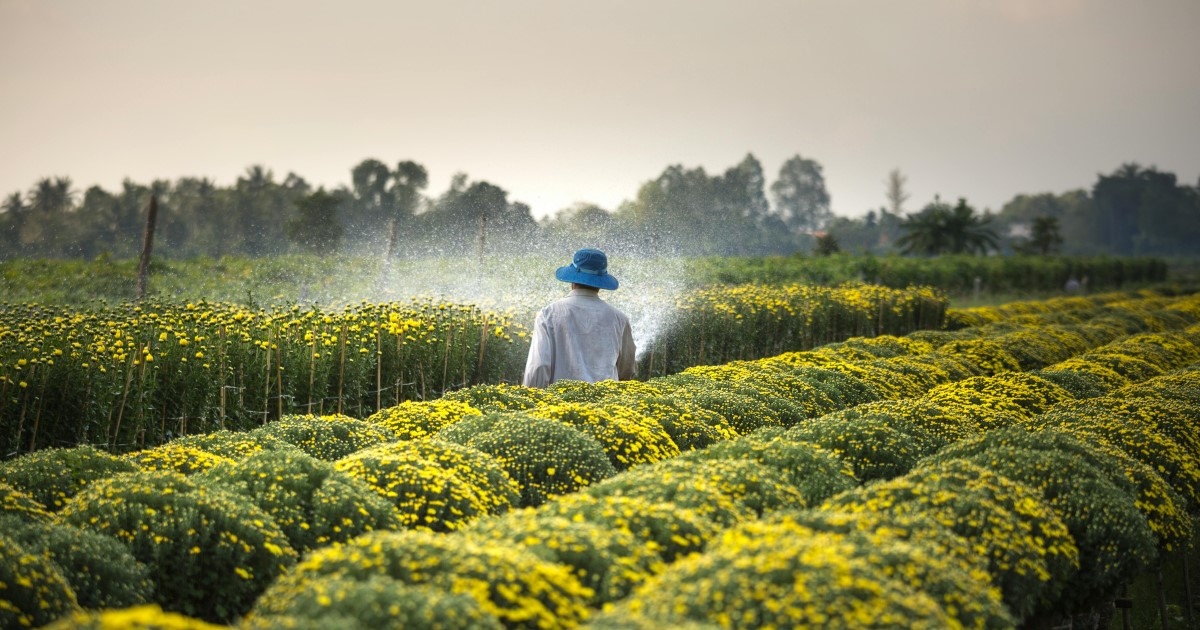Biological Control and Pesticides in Agriculture: Current Status and Applications
A special issue of Applied Sciences (ISSN 2076-3417). This special issue belongs to the section "Agricultural Science and Technology".
Deadline for manuscript submissions: 30 April 2026 | Viewed by 5368

Special Issue Editors
Interests: mass spectrometry; chromatography; environmental analysis; pesticides; low-risk pesticides; extraction; primary and secondary metabolites; target analysis
Special Issue Information
Dear Colleagues,
This Special Issue aims to present the most recent achievements and applications of biological control and pesticides. Biocontrol as a pest control strategy forms the basis of integrated pest management.
There is growing interest in low-risk pesticides, or so called biopesticides, which are certain types of pesticides derived from natural materials such as animals, plants, and bacteria and have attracted attention in pest management in recent decades. They have long been promoted as alternatives to synthetic pesticides but environmental risk assessments should be conducted in order to prove their safety. Due to increased resistance to synthetic pesticides among pests, new bio-based products are promising candidates.
High-quality studies on the use of diverse beneficial organisms in crop protection and food production as well as on new pesticides are most welcome.
This Special Issue is looking for original research articles and reviews that focus on topics including, but not limited to, the following:
- Integrated and biological pest management systems of crops.
- Biopesticides and low-risk pesticides.
- Risk assessment in pesticide applications.
- Sustainable farming using biological control.
- Phytochemicals as effective pesticides and antifungal and herbicidal agents.
- New solutions for microbial and RNA-based pesticides.
Dr. Magdalena Dziagwa-Becker
Dr. Marta Oleszek
Guest Editors
Manuscript Submission Information
Manuscripts should be submitted online at www.mdpi.com by registering and logging in to this website. Once you are registered, click here to go to the submission form. Manuscripts can be submitted until the deadline. All submissions that pass pre-check are peer-reviewed. Accepted papers will be published continuously in the journal (as soon as accepted) and will be listed together on the special issue website. Research articles, review articles as well as short communications are invited. For planned papers, a title and short abstract (about 250 words) can be sent to the Editorial Office for assessment.
Submitted manuscripts should not have been published previously, nor be under consideration for publication elsewhere (except conference proceedings papers). All manuscripts are thoroughly refereed through a single-blind peer-review process. A guide for authors and other relevant information for submission of manuscripts is available on the Instructions for Authors page. Applied Sciences is an international peer-reviewed open access semimonthly journal published by MDPI.
Please visit the Instructions for Authors page before submitting a manuscript. The Article Processing Charge (APC) for publication in this open access journal is 2400 CHF (Swiss Francs). Submitted papers should be well formatted and use good English. Authors may use MDPI's English editing service prior to publication or during author revisions.
Keywords
- pesticides
- plant protection products
- herbicides
- pests
- biological agent
- integrated pest management
- biopesticides
- low-risk pesticides
- environmental risk assessment
- biological control
- sustainability
Benefits of Publishing in a Special Issue
- Ease of navigation: Grouping papers by topic helps scholars navigate broad scope journals more efficiently.
- Greater discoverability: Special Issues support the reach and impact of scientific research. Articles in Special Issues are more discoverable and cited more frequently.
- Expansion of research network: Special Issues facilitate connections among authors, fostering scientific collaborations.
- External promotion: Articles in Special Issues are often promoted through the journal's social media, increasing their visibility.
- Reprint: MDPI Books provides the opportunity to republish successful Special Issues in book format, both online and in print.
Further information on MDPI's Special Issue policies can be found here.






